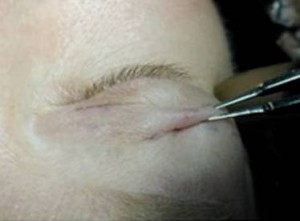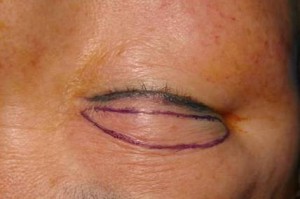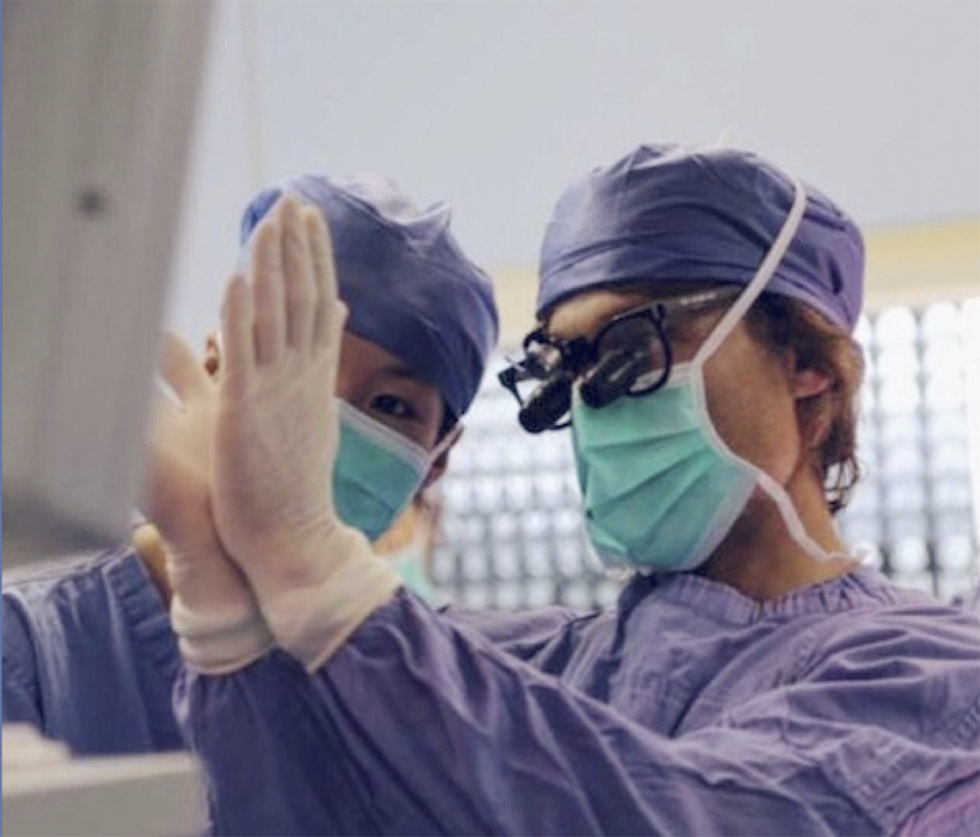Upper eyelid blepharoplasty is a procedure whereby skin, muscle and fat are removed from the upper lid to imprve appearance and/or field of vision. Tissue removal is performed by direct excision. After the lid is appropriately de-bulked of tissue excess, the wound is closed with sutures. Marking of the amount of skin to be excised is critical. This is one of the major factors in determining final eyelid appearance and function (ie. the ability to close the eye). As I have stated before, having an eyelid specialist (ophthalmic plastic surgeon) perform this surgery is the surest way to ensure the best outcome and reduce the incidence of ocular complications.
The eyelid crease (lower marking of skin to be excised) is drawn first. The crease is drawn slightly lower in men than woman, and lower yet in Asian patients. The peak of the crease is in the central portion of the eyelid and it tapers towards the inner and outer parts of the lid. To determine the upper part of the of the marking, the excess skin is pinched together with a forceps with the eyes closed (with lower part of forceps engaging the previously drawn crease), and the upper part of the excess is marked at various points. Thse points are then connected. This is called the eyelid pinch technique. The eyelid crease and upper marking are made continuous with an upward sloping line at both ends. In the end an ellipse of skin to be excised is created.
Below is an example of (left) the eyelid pinch technique to determined the amount of skin to be excised, and (right) the final marking of the skin excision.




